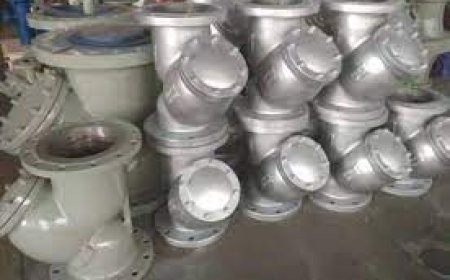Are Fiberglass Doors Worth the Investment for Rental Properties?
Are fiberglass doors a smart upgrade for your rental property? Know the pros, costs, and long-term value for landlords in this in-depth guide.

The Landlords Dilemma
Every landlord faces the same balancing act, invest enough to attract good tenants and keep them happy, but not so much that your margins disappear. Exterior doors might not be the first upgrade on your mind, but if youre replacing doors, the question comes up: are fiberglass doors worth it for rental properties? Fiberglass doors have surged in popularity for homeowners and property managers looking for long-term solutions.
Lets break down what fiberglass doors really offer, where they shine, and what landlords should consider before pulling the trigger.
Why Exterior Doors Matter in Rentals
First impressions count, even in rental properties. The entry door is one of the first things a prospective tenant sees. But its not just about looks. Doors are a security feature, an energy barrier, and a line of defense against weather and wear.
Old, warped, or rusted doors send the wrong message. They can even lead to higher maintenance costs, complaints, or failed inspections. Upgrading to something durable like fiberglass might feel like a big spend, but the real question is: do you get your moneys worth?
What Are Fiberglass Doors?
Fiberglass doors are made by compressing a core (usually foam or wood) inside a fiberglass-reinforced outer shell. This construction makes them lighter than solid wood or steel, but just as tough, sometimes even tougher.
Key features of fiberglass doors include:
-
Resistance to denting, cracking, warping, or rusting
-
Strong insulation properties (helping with energy costs)
-
Minimal upkeep compared to wood
-
A wide range of designs, colors, and finishes (including wood-look)
So, where do they fit in for landlords and property managers?
Fiberglass Doors vs. Other Options: The Real Costs
Most landlords consider three types of exterior doors: wood, steel, and fiberglass. Heres how fiberglass doors stack up:
Wood Doors
Classic look, but high maintenance. Prone to warping, rotting, and insect damage. Need frequent painting or sealing.
Steel Doors
Tough, but can dent, rust, and arent the best insulators. Paint can chip, and they can feel cold and industrial in appearance.
Fiberglass Doors
Combines durability with style. Wont rust or warp, rarely needs repainting, and offers good insulation. Upfront cost is a bit higher, but maintenance costs are lower.
Cost Breakdown Example:
-
Steel door: Lower initial price ($150$350), but repairs and repainting add up
-
Wood door: Moderate to high price ($200$600+), with ongoing upkeep
-
Fiberglass door: Mid-to-high initial price ($250$800+), very low ongoing costs
Over 510 years, fiberglass almost always ends up cheaper overall, especially if you own multiple properties and dont want to deal with annual maintenance headaches.
Curb Appeal and Tenant Attraction
The reality is, tenants notice the small things. A stylish, clean-looking fiberglass door can add real curb appeal, something that makes your property stand out in crowded rental listings.
-
Aesthetics: Fiberglass doors come in a massive variety of styles, colors, and wood-grain textures. You can match any architecture, from classic to modern.
-
Perceived Value: A new, high-quality door makes tenants feel you care about upkeep, which helps with tenant satisfaction and even rental pricing.
-
Security: Many fiberglass doors are built with reinforced locking systems, boosting tenant peace of mind.
Durability: The Low-Maintenance Advantage
Landlords know that every repair call eats into profit and time. Heres where fiberglass doors really shine:
-
Weather resistance: No swelling in humidity, no shrinking in cold, no warping in direct sun
-
Pest proof: Termites and other pests wont touch fiberglass
-
No rust, no rot: Unlike steel or wood
-
Easy to clean: A wipe-down with mild soap keeps it looking new
If you manage rentals in a tough climate (harsh winters, humid summers, salt air), fiberglass doors have a clear edge.
Energy Efficiency and Lower Utility Bills
Older doors are notorious for leaking air, costing tenants and landlords on heating and cooling. Fiberglass doors often come with foam cores that provide top-notch insulation.
-
Lower energy bills: Tenants appreciate savings; landlords appreciate fewer complaints
-
Better temperature control: Fewer calls about drafty rooms or frozen pipes
-
Potential tax incentives: In some areas, upgrading to energy-efficient doors can qualify for credits or rebates
Security and Safety: Protecting Your Investment
A doors main job, at the end of the day, is to keep people and property safe. Heres what you get with fiberglass:
-
Impact resistance: Harder to kick in than many hollow-core or older doors
-
Advanced locks: Most models support multi-point locking systems
-
Fire ratings: Many fiberglass doors are rated to withstand fire for a set period, valuable in multi-unit or high-occupancy properties
The ROI: Does It Really Pay Off?
Lets look at the big picture. Youre paying a bit more up front for fiberglass, but youre saving over time with less maintenance, fewer replacements, and potentially higher rent or lower vacancy rates.
Heres what can affect ROI:
-
Location: Extreme climates or high-crime areas make durability and security more important
-
Tenant churn: The longer your tenants stay, the less you worry about wear and tear
-
Curb appeal: Nicer-looking rentals attract better tenants, faster
In many cases, a single turnover where you dont have to repaint or repair the door can pay for the upgrade.
Installation: Professional vs. DIY
Lets keep it real, not all doors are created equal, and not every installation is a DIY job.
Professional installation ensures:
-
The door fits perfectly (avoiding drafts or jams)
-
Locks and hardware are installed securely
-
Warranty coverage isnt voided by a botched job
If youre a hands-on landlord, fiberglass doors are lighter and easier to work with than steel or solid wood. But in most cases, hiring a pro saves time and hassle, especially if youre replacing multiple doors at once.
Potential Downsides: Are There Any?
No material is perfect. Heres where fiberglass doors might give some landlords pause:
-
Upfront cost: More expensive than basic steel, but usually pays off over time
-
Limited repair options: If the shell is punctured (rare, but possible), repairs can be trickier than wood or steel
-
Very cheap models: Some budget fiberglass doors can look or feel plasticky, stick with reputable brands and models
But in the grand scheme, these are minor compared to the advantages.
When Fiberglass Might Not Be the Best Choice
-
Ultra-high security needs: In rare cases, heavy-gauge steel may be needed
-
Historical properties: If youre required to use specific materials for historical accuracy
-
Short-term holds: If you plan to flip or sell a property within a year, you might not see the full ROI
Final Thoughts: Should You Invest?
Heres the thing: Fiberglass doors hit the sweet spot for most landlords who want to upgrade rental properties. They offer the right mix of curb appeal, durability, and energy efficiency, without saddling you with never-ending upkeep.
If your goal is to attract solid tenants, reduce your repair headaches, and get long-term value from your upgrades, fiberglass doors are absolutely worth considering. The upfront investment pays for itself with fewer hassles, better protection, and a property that stands out.
If you want your rentals to stand out and keep tenants happy for years, check out the fiberglass door collection from Knockety. Smart upgrades today mean fewer headaches tomorrow.
Here, you can find more articles.































